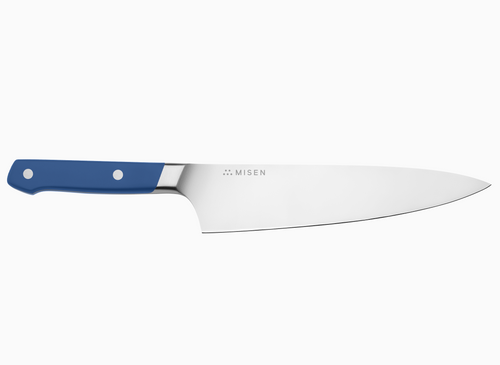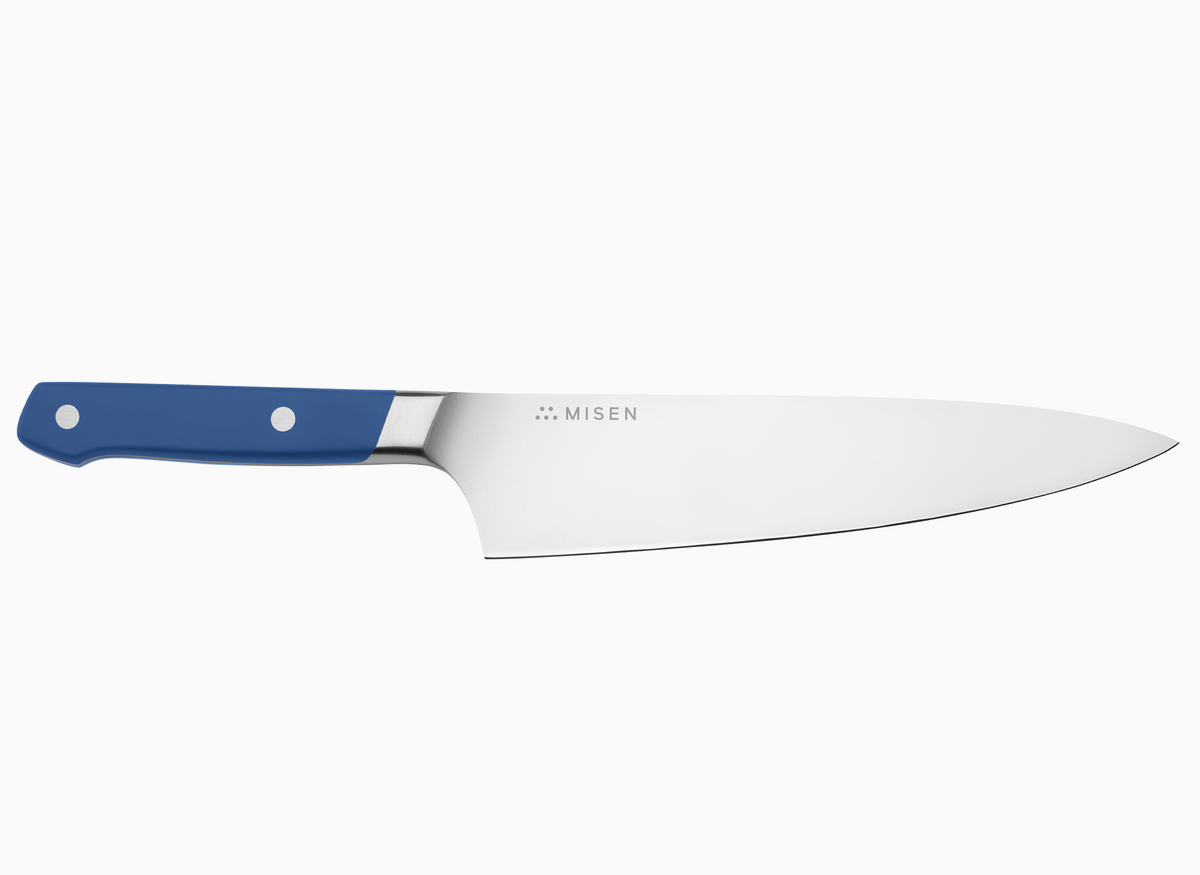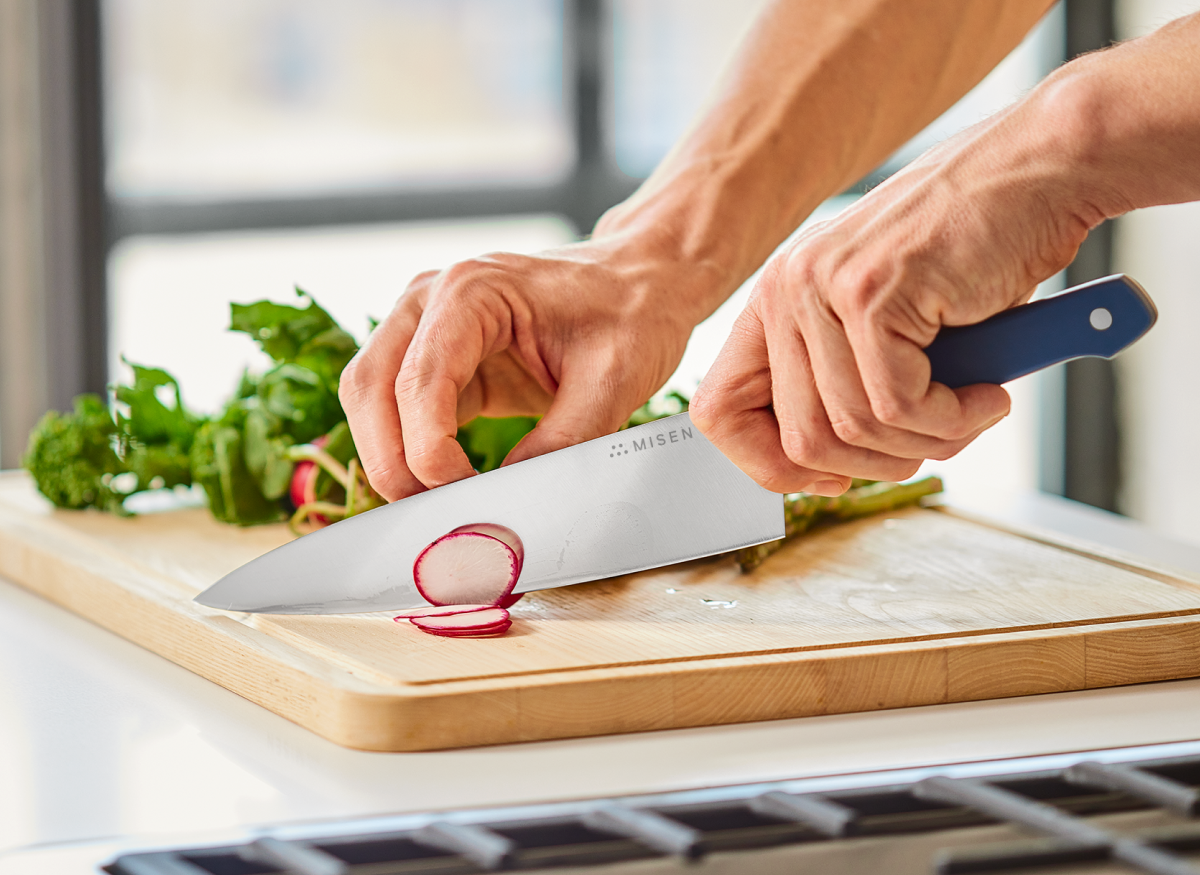Specialized Knife Sets for Every Cooking Need

Specialized knife sets have evolved to meet the diverse needs of modern cooking. From versatile chef's knives to precision paring knives, each tool serves a unique purpose in the kitchen. This guide explores the benefits of investing in quality knife sets and how to choose the right tools for your culinary style.
Introduction to Specialized Knife Sets
The evolution of kitchen knife collections
Kitchen knife collections have come a long way from primitive stone tools to today's sophisticated steel blades. This evolution reflects human ingenuity and changing culinary needs. Ancient civilizations used flint and obsidian, while the discovery of metals ushered in the Bronze and Iron Ages, revolutionizing knife-making[1]. The Middle Ages saw the rise of steel knives, initially a luxury for the wealthy. The 18th century marked a turning point with mass production techniques, leading to more affordable and specialized knives[2].
The 20th century witnessed the emergence of distinct knife styles, each with unique characteristics suited to different culinary techniques[3]. Modern kitchen knife collections now feature a diverse array of specialized tools, catering to the globalized culinary landscape and the demands of both professional chefs and home cooks alike.
Benefits of investing in specialized knife sets
Investing in high-quality knife sets offers numerous advantages for cooking enthusiasts and professional chefs. Superior performance allows for precise cuts and efficient food preparation. Task-specific knives, such as our santoku knife for rapid chopping, enhance versatility in the kitchen. Ergonomic designs reduce hand fatigue during extended use, improving comfort and safety.
Many premium sets feature durable materials like high-carbon stainless steel, which maintains sharpness longer and resists corrosion[4]. The convenience of a well-organized knife block or magnetic strip keeps blades easily accessible while protecting their edges, prolonging the lifespan of the knives. Furthermore, investing in a comprehensive set can be more cost-effective than purchasing individual knives, especially when considering the quality and variety offered in curated collections.
Assessing your cooking style and needs
When selecting specialized knife sets, it's crucial to consider your cooking style and needs. Think about the types of ingredients you frequently work with, as different knife styles excel with various foods. Evaluate your preferred cutting techniques; some knives are ideal for rocking-style chopping, while others offer greater precision for perfect cuts[5].
The comfort and ergonomics of the knife in your hand are paramount, so it's wise to test different handles and grip styles before making a decision[6]. Determine the number of knives you truly need, as investing in fewer high-quality knives often serves better than a large set of low-quality ones[7]. Lastly, consider the maintenance requirements of different knife materials and your willingness to care for them properly, as some require immediate cleaning and drying to prevent damage and rust[8].
Essential Knives for Every Kitchen
Chef's knife: The versatile workhorse
The chef's knife is the quintessential workhorse of the kitchen, revered for its versatility and efficiency. Typically ranging from 8 to 10 inches in length, this all-purpose blade is designed to handle a wide array of culinary tasks with precision[9]. Its curved edge facilitates a smooth rocking motion, making it ideal for chopping, slicing, and dicing fruits, vegetables, herbs, and meats.
The weight and balance of a chef's knife allow for effortless maneuvering, reducing hand fatigue during extended prep work. Whether you're julienning carrots, mincing garlic, or breaking down a whole chicken, the chef's knife proves indispensable. Professional chefs often develop a deep connection with their chef's knife, considering it an extension of their hand in the kitchen[10].
Mastering the proper grip and cutting techniques with a chef's knife can significantly enhance efficiency and precision in food preparation, making it an essential tool for both home cooks and professional chefs alike[11].
Paring knife: Precision for small tasks
The paring knife, with its compact blade typically measuring 2.5 to 4 inches, is a precision instrument essential for intricate culinary tasks. Its diminutive size belies its versatility, making it indispensable for peeling fruits and vegetables with delicate skins, such as kiwis and mangoes. The knife's agility shines when hulling strawberries or deveining shrimp, tasks that require finesse and control.
For segmenting citrus fruits, the paring knife's sharp tip and small blade allow for precise removal of membranes, creating perfect suprêmes. In addition to these delicate operations, the paring knife excels at coring apples, trimming excess fat from meats, and even scoring dough for artisanal bread. Its maneuverability makes it ideal for creating intricate garnishes, adding a touch of culinary artistry to dishes.
While not suited for heavy-duty chopping, the paring knife can efficiently mince small amounts of herbs or garlic, offering precision where larger knives might be unwieldy. This multifaceted tool embodies the principle that in culinary arts, sometimes the smallest instruments yield the most significant impact on presentation and flavor.
Serrated knife: Tackling tough exteriors
The serrated knife, with its distinctive saw-toothed edge, is an indispensable tool for tackling foods with tough exteriors and soft interiors. Its unique blade design allows it to effortlessly slice through crusty breads, ripe tomatoes, and fibrous vegetables without crushing or tearing the delicate inner textures. The serrated edge grips and cuts through hard surfaces with minimal pressure, making it ideal for foods that might slip under a straight-edged blade.
This versatility extends to slicing citrus fruits, sausages, and even some tougher-skinned meats. In professional kitchens, serrated knives prove their worth by maintaining their sharpness longer than straight-edged counterparts, reducing the need for frequent sharpening and thus saving time and resources. The efficiency and precision offered by serrated knives make them invaluable for businesses in the food service industry, from bakeries to high-volume restaurants, where consistent, clean cuts are essential for both presentation and customer satisfaction.
Beyond the Basics: Specialized Knife Sets
Santoku: The all-purpose Asian alternative
The Santoku knife has gained popularity as a versatile alternative to the traditional chef's knife. Its name translates to 'three virtues' or 'three uses,' referring to its proficiency in chopping, dicing, and mincing. The Santoku features a wide sheepsfoot blade with no tip, typically ranging from 5 to 7.9 inches in length. This design allows for more refined slicing and precision tasks, making it particularly adept at creating fine slices of vegetables and seafood.
The blade is often thinner and made of harder steel compared to Western knives, enabling chefs to perform intricate cuts with ease. Santoku knives excel in handling a variety of ingredients, including meat, cheese, fruits, vegetables, and nuts. Their balanced weight and lighter feel make them well-suited for those with smaller hands or who prefer a more nimble tool in the kitchen.
While not as versatile as a chef's knife for heavy-duty tasks like separating chicken parts, the Santoku's ability to create wafer-thin slices and its efficiency in single downward cuts make it an invaluable asset for many culinary professionals and home cooks alike.
Boning and filleting knives: Mastering meat preparation
Boning and filleting knives are specialized tools that elevate meat preparation to an art form. Boning knives, with their narrow, pointed blades ranging from 5 to 7 inches, excel at separating meat from bones and navigating intricate cuts. Their design allows for precise maneuvering around joints and connective tissue, minimizing waste and maximizing yield[12].
Fillet knives, on the other hand, feature longer (5 to 9 inches), thinner, and more flexible blades with a prominent upward curve, making them ideal for delicate work with fish[13]. The flexibility of these knives allows them to glide smoothly along the contours of fish, effortlessly removing skin and bones while preserving the maximum amount of meat.
When choosing between these knives, consider the primary tasks at hand: boning knives offer versatility for various meats, while fillet knives specialize in fish preparation. For optimal performance and safety, it's crucial to maintain these knives properly, cleaning them immediately after use and storing them in designated knife blocks or sheaths to protect their delicate edges[14].
Utility knife: The in-between solution
The utility knife serves as a versatile in-between solution, bridging the gap between larger chef's knives and smaller paring knives. With a blade typically ranging from 4 to 7 inches, this multi-purpose tool excels at a wide array of kitchen tasks. Its pointed, thin tip allows for detailed cutting, such as mincing garlic or finely chopping herbs, while the blade length accommodates slicing larger vegetables like aubergines or courgettes[15].
The utility knife's slim profile and slightly curved blade make it ideal for preparing smaller food items, offering greater precision and control than a chef's knife when tackling more intricate cutting tasks[16]. While it can be used for cutting meat and fish, specialized knives may offer superior performance for these specific tasks. The utility knife's versatility makes it an excellent addition to any kitchen, particularly for those who find chef's knives too large or heavy, providing a perfect balance of functionality and maneuverability for everyday food preparation.
Specialized Knife Sets for Specific Cuisines
Asian-inspired knife sets: Cleavers and nakiri
Asian-inspired knife sets often feature two distinctive tools: cleavers and nakiri knives. Cleavers, with their imposing size and weight, offer unparalleled versatility in the kitchen. Typically measuring around 200mm x 100mm, these powerhouses excel at chopping through tough vegetables, fruits, and even light bones. The cleaver's substantial weight does much of the work, making it efficient for high-volume preparation. Its broad, flat surface doubles as a convenient tool for transferring ingredients.
Nakiri knives, on the other hand, present a more specialized approach to vegetable preparation. With dimensions around 175mm x 45mm, these knives feature a straight edge and blunt tip, optimized for push-cutting techniques. While lacking the raw power of a cleaver, nakiris offer precision and finesse, particularly for achieving uniform cuts on vegetables.
When choosing between these Asian-inspired tools, consider your cutting style, the types of ingredients you frequently prepare, and your comfort with larger, heavier blades versus lighter, more specialized ones.
European-style sets: Emphasis on precision and versatility
European-style knife sets are renowned for their emphasis on precision and versatility, offering a comprehensive range of tools for various culinary tasks. These sets typically feature robust, full-tang construction with high-quality stainless or carbon steel blades that excel in durability and edge retention[17].
The cornerstone of these collections is often a well-balanced chef's knife, designed with a curved blade to facilitate the rocking motion favored in Western cutting techniques. Complementing this workhorse are specialized blades like paring knives for intricate work, bread knives with serrated edges for effortless slicing, and utility knives for versatile everyday use. European sets frequently include kitchen shears and honing steels, enhancing their practicality[18].
The versatility of European knife sets allows users to tackle a wide range of ingredients and techniques with confidence, from delicate herb mincing to robust meat preparation, making them a cornerstone of well-equipped kitchens worldwide.
Specialized steak knife sets for the perfect cut
Specialized steak knife sets elevate the dining experience by providing precision-engineered tools for the perfect cut. High-quality steak knives feature razor-sharp blades that effortlessly slice through even the toughest cuts of meat without tearing or shredding the fibers. When selecting a steak knife set, opt for straight-edged blades over serrated ones, as they provide cleaner cuts and are easier to maintain.
Full-tang construction and ergonomic handles contribute to the overall balance and comfort during use, enhancing the dining experience. Investing in a quality set of steak knives not only improves the enjoyment of meals but also showcases a commitment to culinary excellence.
Choosing and Maintaining Your Specialized Knife Set
Materials matter: Carbon steel vs. stainless steel
Carbon steel and stainless steel knives each offer distinct advantages for culinary enthusiasts. Carbon steel blades, containing at least 0.6% carbon, are renowned for their exceptional sharpness and edge retention. They can achieve a finer edge than most stainless counterparts and maintain it longer, making them ideal for precision cutting tasks[19]. However, carbon steel requires diligent maintenance to prevent rust and discoloration.
Stainless steel, containing at least 10.5% chromium, offers superior corrosion resistance and easier maintenance, making it a popular choice for home cooks. Modern high-carbon stainless steel alloys bridge the gap between these materials, offering enhanced edge retention while maintaining rust resistance[20].
The choice between carbon and stainless steel ultimately depends on the user's preferences and willingness to maintain their knives. Carbon steel excels in professional kitchens where frequent sharpening and meticulous care are standard, while stainless steel's convenience suits busy home cooks.
Storage solutions: Blocks, magnetic strips, and rolls
Proper knife storage is crucial for maintaining blade sharpness and ensuring kitchen safety. Magnetic knife strips offer an elegant solution, combining accessibility with space efficiency. These wall-mounted options showcase knives while keeping countertops clear. High-quality strips feature strong magnetic fields that securely hold knives without damaging blades[21].
For those preferring a more traditional approach, knife blocks provide excellent blade protection. Universal models accommodate various knife sizes, while slotless designs offer flexibility for growing collections. In-drawer knife organizers, often made of cork or soft materials, prevent blades from scraping against each other and are ideal for kitchens with limited counter space[22].
Knife rolls and cases cater to professional chefs or those who frequently transport their knives, offering portability without compromising blade safety. Regardless of the chosen method, experts emphasize the importance of cleaning, drying, and storing knives immediately after use to prevent rust and maintain optimal condition[23].
Proper care and sharpening techniques for longevity
Proper care and sharpening techniques are essential for maintaining the longevity and performance of specialized knife sets. Regular honing with a steel rod is crucial for realigning the blade's edge every 20-30 minutes of use. However, some knives require a different approach, focusing on periodic sharpening with high-grit whetstones[24].
For optimal results, use a 1000-grit stone for harder steel knives and an 800-grit stone for softer steel knives. Whetstones offer superior control and precision compared to automatic sharpeners, which can wear out quickly and remove excessive material[25].
Proper cleaning is equally important; hand-wash knives in warm, soapy water and dry them immediately to prevent rust and damage. Avoid dishwashers and prolonged soaking, as these can compromise blade integrity[26]. The frequency of sharpening depends on usage, but a good rule of thumb is to sharpen when the knife begins to slip on food or requires extra effort to cut.
While at-home maintenance is encouraged, periodic professional sharpening can provide a thorough tune-up, much like visiting a dentist for oral health[27]. By adhering to these care and sharpening techniques, specialized knife sets can maintain their edge and performance for years to come.
Conclusion
Specialized knife sets are essential tools for any serious cook, offering precision, efficiency, and versatility in the kitchen. By investing in high-quality knives and maintaining them properly, you can elevate your culinary skills and enjoy a more seamless cooking experience. Whether you're a professional chef or a passionate home cook, the right set of knives can make all the difference in your culinary journey.
Ready to upgrade your kitchen with premium, specialized knife sets? Shop Now and discover the perfect tools to enhance your cooking experience.
- Investing in high-quality, specialized knife sets enhances cooking efficiency and precision.
- Different knife types serve specific purposes, from versatile chef's knives to precision paring knives.
- Proper storage and maintenance are crucial for preserving knife sharpness and longevity.
- Consider your cooking style and needs when selecting knife materials and styles.
- Regular honing and periodic sharpening are essential for maintaining optimal knife performance.
- William Henry. (n.d.). The History of Kitchen Knives: From Ancient Times to Modern Day.
- Koi Artisan. (n.d.). The History of Kitchen Knives.
- New West KnifeWorks. (n.d.). The History of the Chef Knife.
- Food & Wine. (n.d.). The Best Knife Block Sets for Every Kitchen.
- Vitamix. (n.d.). Professional Knife Sets for Chefs: How to Choose the Best One.
- Brown's Kitchen. (n.d.). How to Choose the Perfect Kitchen Knife for Your Cooking Style.
- Curated. (n.d.). An Expert Guide to Knife Sets: How to Find the Best Knife Set for You.
- Vitamix. (n.d.). Professional Knife Sets for Chefs: How to Choose the Best One.
- Auguste Escoffier School of Culinary Arts. (n.d.). Different Knives and the Best Uses for Each.
- Damas Knives. (n.d.). What Knives Professional Chefs Use.
- Cozymeal. (n.d.). What is a Chef Knife Used For?
- Kyoku Knives. (n.d.). Your Guide to the Ideal Boning Knife.
- F.N. Sharp. (n.d.). Boning Knife vs Fillet Knife.
- Cutting Edge Services. (n.d.). A Quick Guide to Boning Knives.
- Knives and Tools. (n.d.). What is a Utility Knife?
- Zyliss. (n.d.). A Guide to the Different Types of Kitchen Knives.
- Sharp Knife. (n.d.). Exploring European Kitchen Knives: A Tradition of Versatility and Durability.
- The New York Times Wirecutter. (n.d.). The Best Knife Set.
- Koi Knives. (n.d.). Stainless Steel vs Carbon Steel.
- Serious Eats. (n.d.). Why Buy Carbon Steel Knives?
- Serious Eats. (n.d.). The Best Magnetic Knife Holders.
- Chubo Knives. (n.d.). How to Store Knives.
- Bon Appétit. (n.d.). Knife Storage 101.
- Culinary Lab School. (n.d.). Choosing, Maintaining, and Sharpening Kitchen Knives.
- Chef's AC. (n.d.). Knife Sharpening and Maintenance Best Practices.
- Chef's AC. (n.d.). Knife Sharpening and Maintenance Best Practices.
- Town Cutler. (n.d.). Do's and Don'ts of Knife Sharpening and Maintenance.








